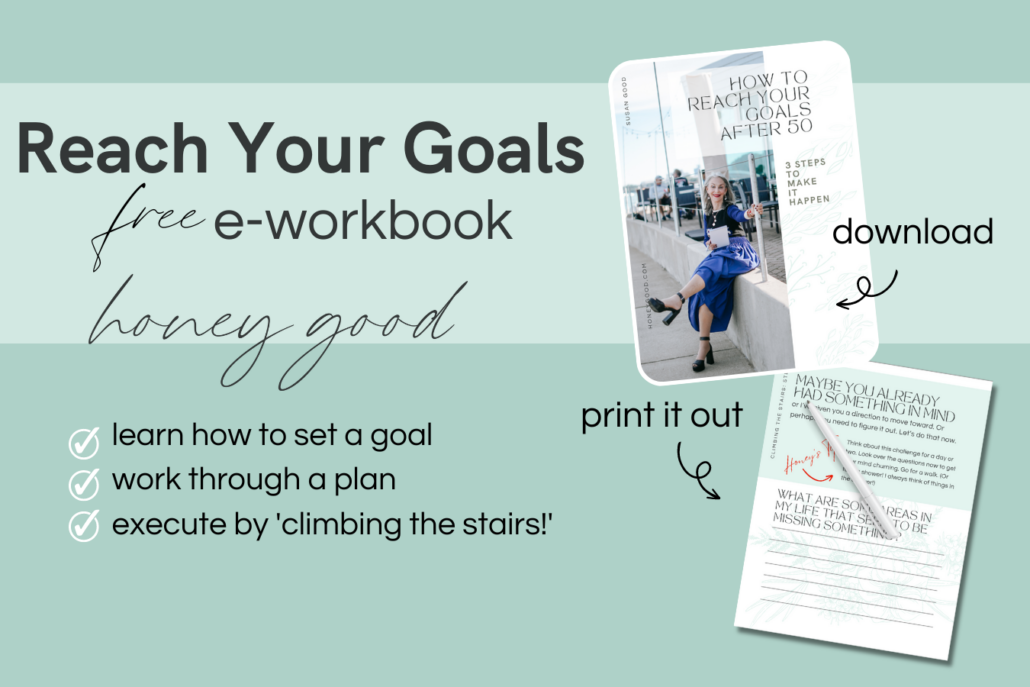
Do you know how to build a new habit and stick with it?
We all have things we would like to improve about ourselves or for ourselves. And indeed, dear reader, we should always be open to the idea. No matter our age, there is likely something we could do to make our lives better. Behavior change is a gradual and deliberate process that helps us improve ourselves through consistent effort and patience. Whether it be having a cleaner, more organized space. Perhaps we want to make it a point to practice self-care? Or a change that will benefit our health and longevity, including improvements in mental health, which is a key part of overall well-being.
The question is how do we make a change after 50? The answer is simple, we create new habits.
Why is it important to create habits?
The unfortunate truth is that some things that are good for us we see as chores. If we view them as chores, we are likely to put them off, or not do them at all. A habit is something that is done automatically. I, for one, would rather do something good for myself automatically, than grudgingly. Routines take willpower out of the equation and help reinforce positive behavior patterns, making it easier to maintain healthy actions over time.
It’s easy to have good intentions, but follow-through may not be as easy as we would wish. Through the years I have come up with a few keys that help me form—and stick to—new habits by establishing and sustaining new behavior.
How Long Does it Take to Form a Habit?
There is a long-held belief that it takes only 21 days to build a new habit. This has since been (somewhat) disproven. Newer information now says it’s closer to 66 days. However, forming a habit often takes several weeks, not just a single week, and the exact timeline can vary depending on the individual and the complexity of the behavior. But do not let that discourage you.
If you follow the steps I’ve laid out and understand the habit formation process, you’ll see that forming a habit is a gradual journey that requires consistent effort over weeks. You’ll start small and snowball your results. You’ll get there in no time.
Understanding the Habit Loop
When it comes to habit formation, understanding the habit loop can make all the difference in building healthy habits that truly stick. The habit loop is made up of three simple parts: the cue, the routine, and the reward. This cycle is at the heart of how habits form and why they become second nature in our daily life.
Let’s break it down: a cue is just what triggers your behavior—maybe it’s the sound of your morning coffee brewing or the moment you wake up. The routine is the action you take, like going for a brisk walk or reaching for your phone. Finally, the reward is the benefit you get, whether it’s a sense of accomplishment, a burst of energy, or a little instant gratification. For example, if you want to start a new workout routine, you might use your morning coffee as a cue, exercise as your routine, and enjoy the feeling of energy and pride as your reward.
Research shows that when you repeat this loop—cue, routine, reward—over time, your brain starts to automate the behavior. That’s how good habits, like exercising or getting better sleep, become part of your life without so much conscious effort. The same process can help you replace bad habits with more positive ones, or even tackle more complex behaviors, like eating healthier or making time for physical activity.
To build a new habit, start by identifying the cue and reward that will work for you. Then, create a routine that connects the two. Focusing on one habit at a time and tracking your progress can help you stay consistent and see more progress, even when things get tough. Remember, building habits is a process—especially with more complex behaviors—and it’s perfectly normal to have setbacks along the way.
It’s also important to know that motivation and willpower can only take you so far. While they can help you get started, they aren’t always reliable for lasting change. Instead, try to create an environment that supports your new habits—set up cues that remind you to act, and make your routines as easy as possible to repeat. Over time, these small changes add up, and your new behaviors will feel like second nature.
So, darling, be patient with yourself and celebrate every bit of progress. With a little effort, the right strategies, and a good understanding of the habit loop, you can create habits that lead to a healthier, happier life.
7 Tips to Build a New Habit
Darlings, I’ve done the trial and error for you when it comes to setting goals, creating routines, and building a new habit. Through this process, I have created a strategy guide focused on habit building to help you establish routines with flexibility and consistency. Here are the best habit building strategies I have created based on experience to ensure you create the change you are seeking.
#1 Tip to Build a Habit: Know Your Why
First, you need to know what habit you want to create. Is it that you want to incorporate greens into your diet every day? Maybe you want to walk a mile every day. Perhaps you want to make your bed as soon as you get up. No matter the goal, you need to know why you’re doing it, why it’s important to you. You need to have a clear picture of the results.
Now is the time to be specific. Think about how you will feel when the habit you want to create is part of your established routine. Consider what you hope to achieve by building this new habit, and how reaching this goal will impact your life. Use sensory details. Close your eyes and picture it.
Let’s use the example of the simple act of making your bed as soon as you get up. Close your eyes and picture how that will feel. Imagine a smell associated with it. Perhaps one of freshly laundered sheets. Picture the light streaming in through the windows and falling on your perfectly arranged pillows. Imagine how happy and accomplished you’ll feel when you start your day out this way.
Whenever you feel your willpower waning go back to this feeling. Picture it as if it’s already accomplished.

If you want to change, you have to know your “Why!”
#2 Write it Down
One simple yet powerful way to help create your habit is to write it down.
You could write it down on beautiful stationery, my preferred method, or you could make a note on your phone. Choose whichever method works best for you. Just do it, dear reader.
I also recommend tracking your habits. There are many habit trackers out there. Pretty ones you can print right from your computer. There are even apps. Or you can simply use a calendar with little golden star stickers like you got in elementary school. When you track your habits, you can see your repeated progress over time, which helps with sticking to your new habit and maintaining consistency.
There’s nothing better than seeing a representation of your progress. You’ll want to keep the streak alive.
#3 Thing to Do to Build a Habit: Do Research
This ties into “Knowing Your Why.” It’s important to understand the benefits of what you are trying to accomplish. If you do the research, you’ll understand more fully what it will do for you. This, in turn, will help you imagine your new life with your habit firmly in place.
#4 Choose a Timeline
We’ve already established that it takes longer than 21 days to truly form a habit. But I believe it works best to start even smaller. I like to start with 10 days.
You can commit to anything for 10 days.
Think of this as a tiny commitment—just a small step to get started. Focusing on a small change, like a two-minute routine or a simple adjustment in your environment, makes it easier to begin and stick with your new habit. Taking these small steps can build momentum and lead to bigger progress over time.
In your mind, if you’ve committed to 10 days, there is an end in sight. When your self-control is on shaky ground, just remind yourself, it’s only for 10 days. You can do it. Then, after you’ve seen what you can accomplish in 10 days, push yourself further. See what more you can do. The snowball effect will surprise you.

Ready to change? Use my 7 tips to make sure your goals stick!
#5 Set Reminders
While I personally like to write things down on paper, reminders tend to work better electronically. Simply set a reminder on your phone to go off at the appropriate time each day. Until that habit is established, it’s easy to forget. A reminder will keep it top of mind in the hustle and bustle of life.
#6 Commit with a Friend
We’re more likely to stick to something if we’re doing it with a friend. Friends can provide encouragement and support, helping us build new habits and reinforcing positive routines together. We might, at times, be okay with letting ourselves down. We are less likely to be okay with letting a friend down. This may not work with every new habit we are trying to form (I doubt we need to recruit a friend to help us stick to making our bed every day). But for many habits, it’s very helpful! Come join my private Facebook group for women over 50. We would love to help you stay committed to your goal!
#7 Give Yourself Grace
You will likely have slip-ups, dear reader, and that is okay. Experiencing failure is a normal part of the habit formation process and should not discourage you. The thing to remember is that you’re doing your best. You’re making an effort and that counts for so much. When you realize you’re missing the golden star for that day, worry not, tomorrow is a new day. There is only one you, be loving to yourself.
To Succeed, You Must Take a Step
To make a change, you MUST take the first step, and then the second, and the third! You have to begin to climb the stairs if you ever expect to make it to the top. If you are ready to make a change, I recommend you download my free e-workbook as a guide!
You can start in small ways, such as adopting tiny habits, adding a bit more exercise to your day, or making a small change to eat healthier. Focusing on repeating these actions and putting your strategies into practice helps reinforce new routines. Immediate reward, like feeling accomplished after a workout or enjoying a healthy snack, can make it easier to stick with new behaviors. Connecting a new habit to an existing habit or existing ones—like drinking a glass of water after brushing your teeth—leverages established behavior patterns and makes it easier to form habits that last.
I hope that you will give these steps a try, darling. I’d love to hear what habit you would like to form! Please let me know in the comments.

If you enjoyed this piece, please subscribe to my email list. When I post a daily story, you will receive it in your inbox.

Great advise, I’ll see how this works.
Thank you, this was very helpful.
Glad I could be of help. I am smiling. Warmly, Honey
After downsizing to a smaller house, I found that my bedroom was more visible. When the bed is made each day the room looks bigger and neater. It also encourages me to not go back to bed, but to stay active.
Habits are important. Yours is so visible it really does bring joy. Add something else now. Never give up on living a life with structure but never over do. Happy 2024. Warmly, Honey